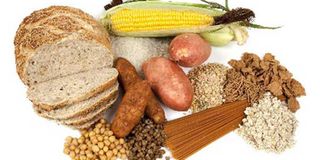How going wheat-free can help you lose weight

Giving up wheat is all the rage these days, particularly by people that may not necessarily have a sensitivity to wheat. PHOTO/FILE
What you need to know:
- Experts used to believe that it was sensitivity to gluten, the key protein in wheat, that caused the unpleasant symptoms. But gluten is also found in other grains like rye, barley and oats, and most people don’t have a problem with them.
- So while a couple of slices of toast might leave you bloated after breakfast, a bowl of oats may go down a treat. It’s all about lessening the wheat “load” on the body.
Giving up wheat is all the rage these days, particularly by people that may not necessarily have a sensitivity to wheat.
When you have an allergy, there is an abnormal immunological response to a food (swollen lips, itchy throat, etc.,). When you have an intolerance, the symptoms are generally milder.
While not everyone is intolerant to wheat, it is a relatively widespread and under-recognised problem. In fact, a number of people I see at my clinic have complained that they literally put on weight overnight.
This weight is actually just water and helps to explain why so many people find that cutting out a food they’re intolerant to can help them shed up to three kilos, without going on a diet.
While it’s very unlikely that someone’s going be overweight solely due to a wheat intolerance, the fact that you might feel more energetic, slimmer and better all round by cutting it out can help to keep you motivated to stick to a healthy (even weight-loss) diet.
It may just be worth going against the grain.
Experts used to believe that it was sensitivity to gluten, the key protein in wheat, that caused the unpleasant symptoms. But gluten is also found in other grains like rye, barley and oats, and most people don’t have a problem with them.
SENSITIVITY
Most tellingly, 80 per cent of people diagnosed with coeliac disease, an extreme gluten allergy, don’t react to oats.
So what’s going on? It appears that the sensitivity is actually to a particular kind of gluten called gliadin – the main kind of gluten in wheat; rye and barley only contain small amounts and oats don’t contain any.
So while a couple of slices of toast might leave you bloated after breakfast, a bowl of oats may go down a treat. It’s all about lessening the wheat “load” on the body.
By overburdening your body — with, say a wheat-based cereal for breakfast, a sandwich for lunch, then pasta for dinner — you can create a temporary intolerance to wheat. If that’s the case, limiting your intake to one wheat-based meal a day may bring about an improvement in your symptoms.
If not, start by avoiding all gluten grains (wheat, rye, barley and oats) for at least 10 days.
If you start to feel noticeably better, you could try reintroducing oats, since oats contain no gliadin, and see what happens. The best case scenario? You could lose a few pounds without even trying.
WHAT TO EAT
Beans, lentils, rice (preferably brown), sweet potatoes and oats are all good alternative sources of starch to help provide nutritious bulk to your meal.
If you’re looking for a direct swap for wheat-based bread, consider varieties based on rye.
Rye breads seem less likely to provoke the problems associated with a food intolerance.




